Enhancing shoulder mobility is crucial for overall fitness and injury prevention. Whether you’re aiming to alleviate tightness, recover from an injury, or simply strengthen your shoulders, incorporating targeted stretches and exercises is essential. From the cross-arm stretch to dynamic arm swings, these movements not only improve flexibility but also bolster shoulder strength and function. Dive into our comprehensive guide to discover how these exercises can enhance your functional fitness and unleash your shoulder’s full potential.
Understanding the Distinction: Mobility vs. Flexibility
Mobility and flexibility are commonly conflated, yet they serve distinct functions. Flexibility pertains to the lengthening ability of muscles, while mobility concerns the capacity of joints to maneuver through their full range of motion. In the context of shoulder movement, pinpointing the source of limitation is crucial. Understanding joint mobility and biomechanics is paramount in addressing dysfunction. By delving into the intricacies of how our joints function, we gain invaluable insights into optimizing movement and promoting overall shoulder health.
Enhance Your Shoulder Mobility with These Exercises
Incorporating targeted shoulder exercises into your routine can significantly improve strength and mobility while reducing the risk of tightness and injury. Before diving into these exercises, it’s crucial to warm up with dynamic upper body stretches like arm circles, swings, and spinal rotations for 5 to 10 minutes.
“Warming up in this manner enhances blood flow to the targeted area, optimizing overall performance,” advises a fitness expert. If you’re recovering from a shoulder injury or surgery, consult with a physical therapist to ensure you’re performing the appropriate exercises and stretches tailored to your specific condition.
1. Standing Arm Swings
Elevate your warm-up routine with dynamic exercises like Standing Arm Swings, designed to enhance blood flow and flexibility in the shoulder joint.
How To:
- Stand tall with your arms relaxed by your sides, ensuring proper posture.
- Engage your core muscles and initiate the swing, moving your arms forward in a controlled manner.
- Swing your arms upward until they reach their maximum height, maintaining relaxed shoulders throughout the motion.
- Return your arms to the starting position and repeat the movement.
- Aim for 30 to 60 seconds of continuous arm swings to reap the full benefits of this dynamic exercise.
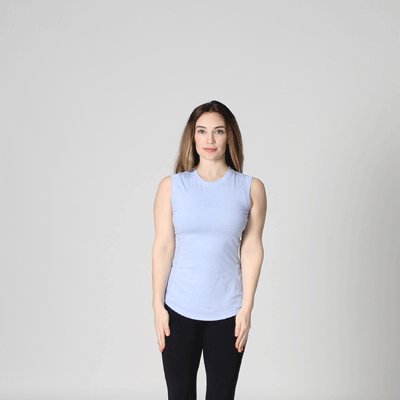
2. Reverse Fly
The Reverse Fly exercise targets the upper back and thoracic muscles, providing essential stability to the shoulder joint. This exercise requires a pair of light dumbbells and proper form to maximize effectiveness.
How To:
- Hold a dumbbell in each hand, maintaining a neutral grip.
- Stand with your feet shoulder-width apart, knees slightly bent for stability.
- Engage your core and hinge forward at the waist, keeping your back straight and arms extended towards the floor.
- Raise your arms laterally away from your body, focusing on squeezing your shoulder blades together at the top of the movement.
- Stop when your arms reach shoulder height, then slowly lower them back to the starting position.
- Aim for 3 sets of 10 repetitions, maintaining controlled movements throughout to ensure proper muscle engagement and minimize the risk of injury.

3. Shoulder Pass-Through
The Shoulder Pass-Through exercise is a dynamic movement that effectively increases joint mobility while engaging the surrounding shoulder muscles. All you need is a long stick, such as a broomstick or PVC pipe.
How To:
- Stand with your feet shoulder-width apart, maintaining a stable base.
- Hold the stick with an overhand grip, ensuring your arms are wider than shoulder-width apart. Keep the stick parallel to the floor.
- Engage your core muscles and slowly raise the stick above your head, keeping your arms straight throughout the movement. Only go as far as is comfortable for your shoulders.
- Hold the overhead position for a few seconds to maximize the stretch.
- Return to the starting position with controlled movements.
- Repeat the pass-through motion 5 times, focusing on smooth and controlled movements to optimize shoulder mobility.
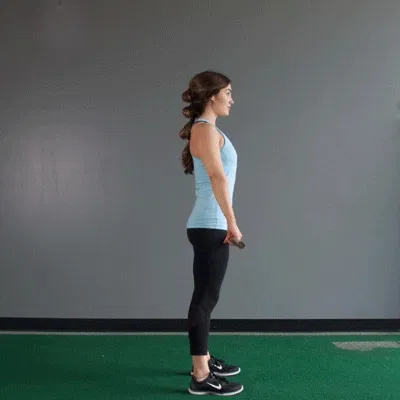
4. Rotation with Dumbbell
Incorporating Dumbbell Rotations into your routine effectively warms up the shoulders for overhead and throwing motions, making it a staple for athletes. This exercise targets shoulder mobility and external rotation, essential for various sports movements.
How To:
- Stand with your feet shoulder-width apart, maintaining a stable stance.
- Hold a light dumbbell in your right hand, positioning your elbow at shoulder height.
- Rotate your shoulder to raise your arm and the weight towards the ceiling, ensuring the front of your hand faces upward.
- Slowly return to the starting position with controlled movements.
- Repeat the rotation on each side, completing 2–3 sets of 12 repetitions per arm.
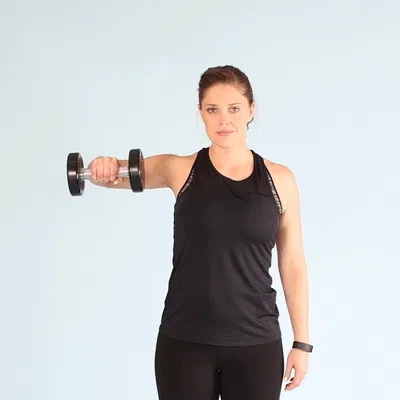
5. High-to-Low Rows
High-to-low rows are an effective exercise for challenging the upper back and thoracic muscles, crucial for stabilizing the shoulder joint. This exercise can be performed using a resistance band or a cable machine at the gym.
How To:
- Secure a resistance band to a sturdy object above shoulder height.
- Kneel down on one knee and grasp the band with the opposite hand, allowing the other hand to rest at your side.
- Pull the band towards your body while maintaining a straight torso and arm. Focus on squeezing the shoulder blades together to engage the upper back muscles.
- Return to the starting position with controlled movements.
- Repeat the movement for 2–3 sets of 10 repetitions on each side.
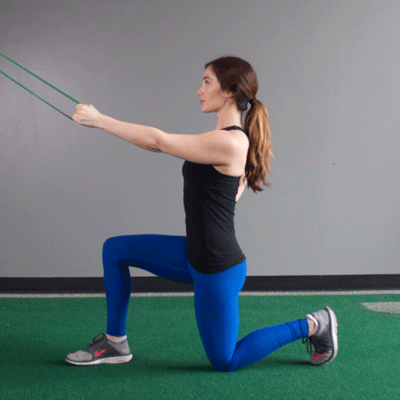
Enhance Shoulder Flexibility with Mobility Stretches
Stretching the shoulders plays a crucial role in injury prevention and maintaining optimal muscle and joint function. These shoulder mobility stretches are particularly beneficial for improving flexibility and reducing the risk of injury. Since the stretches are static, it’s advisable to perform them post-workout or immediately following a warm-up incorporating dynamic stretches.
6. Child Pose
Child’s Pose, a staple in yoga practices, offers an excellent opportunity to open the shoulder joint into flexion and stretch the latissimus dorsi muscles, as noted by fitness experts. This posture also provides relief to the lower back.
How To:
- Begin by kneeling on an exercise mat with an upright posture.
- Slowly extend your arms forward by crawling your hands out until they are fully extended in front of you, while maintaining a downward gaze.
- Lower your torso onto your thighs and bring your forehead to the ground.
- Hold this position while taking three deep breaths, allowing your body to relax and sink deeper into the stretch.
- Repeat the stretch 3–5 times to fully benefit from its therapeutic effects.

7. Cross-Arm Stretch
The cross-arm stretch effectively targets the rotator cuff muscles, providing a deep stretch in the rear shoulders.
How To:
- Stand with your feet slightly less than shoulder-width apart.
- Bring your right arm up to a little less than shoulder height.
- Place your left hand on your right elbow and gently pull your right arm across your body, using the left hand to support the arm.
- Hold this position for up to 30 seconds, feeling the stretch in your rear shoulders.
- Repeat the stretch on the opposite side.
- Perform the stretch on each side 3–5 times to enhance flexibility and relieve tension in the rotator cuffs.
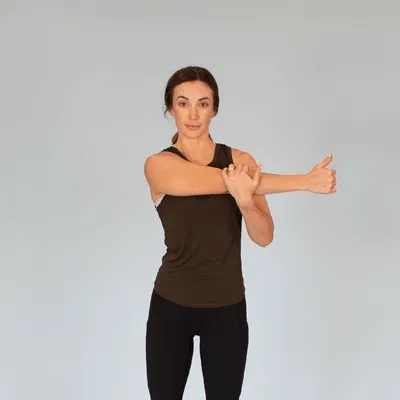
8. Sleeper Stretch
The Sleeper Stretch, endorsed by fitness experts, is a valuable method for improving internal rotation in the shoulder. Often prescribed during shoulder injury rehabilitation, this stretch targets specific areas for enhanced recovery and flexibility.
How To:
- Lie on the affected side, ensuring your shoulder is stacked beneath you.
- Extend your elbow straight out from your shoulder and bend the arm so your fingers point toward the ceiling.
- Using the unaffected arm, gently guide the bent arm towards the floor until you feel a stretch in the back of the affected shoulder.
- Hold this position for up to 30 seconds, allowing the muscles to relax and elongate.
- Repeat the stretch for 3 repetitions before switching sides, emphasizing the affected side during rehabilitation or injury recovery.

9. Doorway Stretch
The Doorway Stretch is an effective way to target and stretch each side of the chest individually, beneficial for addressing any imbalances in tightness. This stretch primarily targets the pectoralis muscles in the chest and promotes increased shoulder mobility.
How To:
- Stand in a doorway with your elbows and arms forming a 90-degree angle.
- Adopt a split stance with your feet for stability.
- Bring your right arm up to shoulder height and place your palm and forearm on the doorway.
- Gently lean forward into the stretch, ensuring comfort and avoiding any excessive strain.
- Hold the stretch for up to 30 seconds, feeling the gentle release in the chest muscles.
- Change sides and repeat the stretch, performing on each side 2–3 times to optimize chest flexibility and shoulder range of motion.
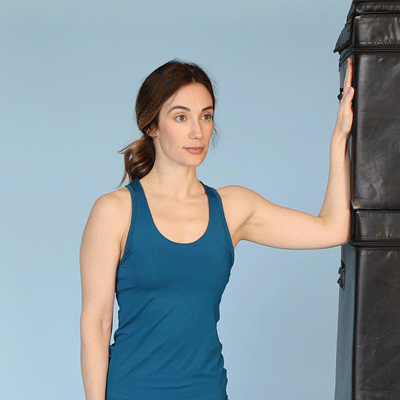
10. Chest Expansion
Chest Expansion Stretch offers a beneficial way to stretch the back muscles, open up the chest, and improve shoulder range of motion. This stretch, recommended by fitness experts, also aids in enhancing lung capacity for better oxygen intake.
How To:
- Stand tall with your feet together, maintaining proper posture.
- Hold the end of a towel or exercise band in each hand, positioning your arms behind your body.
- Utilize the towel or band to draw your shoulder blades together, simultaneously opening your chest and lifting your gaze towards the ceiling.
- Hold this pose for up to 30 seconds, allowing for a deep stretch sensation.
- Repeat the stretch 3–5 times to maximize the benefits of back flexibility and chest expansion.
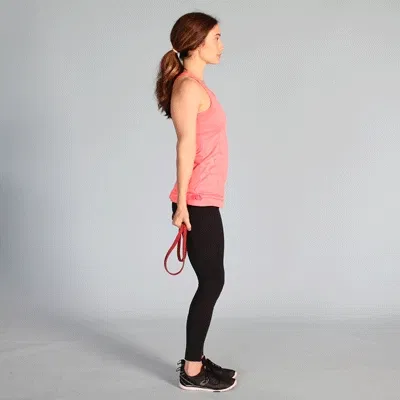
Conclusion
Incorporating shoulder mobility exercises and stretches into your fitness routine is essential for achieving pain-free movement and preventing injury. Understanding the distinction between mobility and flexibility allows for a more targeted approach to shoulder health, ensuring that both the muscles and joints function optimally.
By integrating exercises such as Standing Arm Swings, Reverse Flys, and Shoulder Pass-Throughs, you enhance strength, stability, and range of motion in your shoulders. Complementing these exercises with static stretches like Child’s Pose and Cross-Arm Stretch further improves flexibility and reduces muscle tightness.